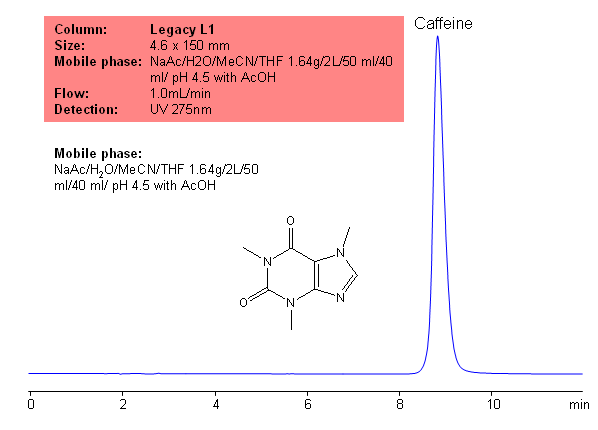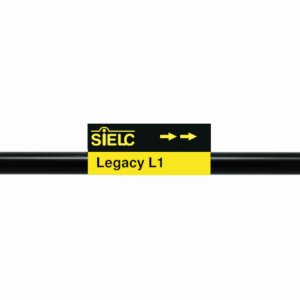
Application Notes: Caffeine is the most common stimulant used. According to USP methods, caffeine should be anhydrous or contain no more than one molecule of water of hydration. Additionally, caffeine should not contain more than 101% and no less 98.5% caffeine calculate on a anhydrous basis. The USP HPLC method for the separation of caffeine was developed on Legacy L1 column according to the US Pharmacopeia methodology. L1 classification is assigned to reversed-phase HPLC column containing C18 ligand. Support for the material is spherical silica gel with particles size 3-10 um and pore size of 100-120A. Resolution between critical pairs corresponds to rules and specifications of UPS.
Application Columns: Legacy L1 C18 HPLC column
Application compounds: Caffeine
Mobile phase: NaAc/H2O/MeCN/THF 1.64g/2L/50 ml/40 ml/ pH 4.5 with AcOH
Detection technique: UV
Reference: USP35: NF30
Application Columns: Legacy L1 C18 HPLC column
Application compounds: Hydrocortisone
Mobile phase: MeCN/H2O 25:75
Detection technique: UV
Reference: USP30: NF35
| Column | Legacy L1, 4.6×150 mm, 5 µm, 100A |
| Mobile Phase | NaAc/H2O/MeCN/THF 1.64g/2L/50 ml/40 ml/ pH 4.5 with AcOH |
| Flow Rate | 1.0 ml/min |
| Detection | UV, 275 nm |
| Class of Compounds |
Xanthine, Hydrophobic, Ionizable |
| Analyzing Compounds | Caffeine |
Application Column
Legacy L1
SIELC's family of Legacy columns is based on the United States Pharmacopeia's (USP) published chromatographic methods and procedures. Numerous brands have columns used in USP reference standards and methods. USP has created various designations to group together columns with similar types of packing and properties in the solid phase. SIELC's Legacy columns adhere to these strict requirements and properties, allowing you to easily replace older columns that are no longer available without needing to significantly modify your method or SOPs.
Select options




